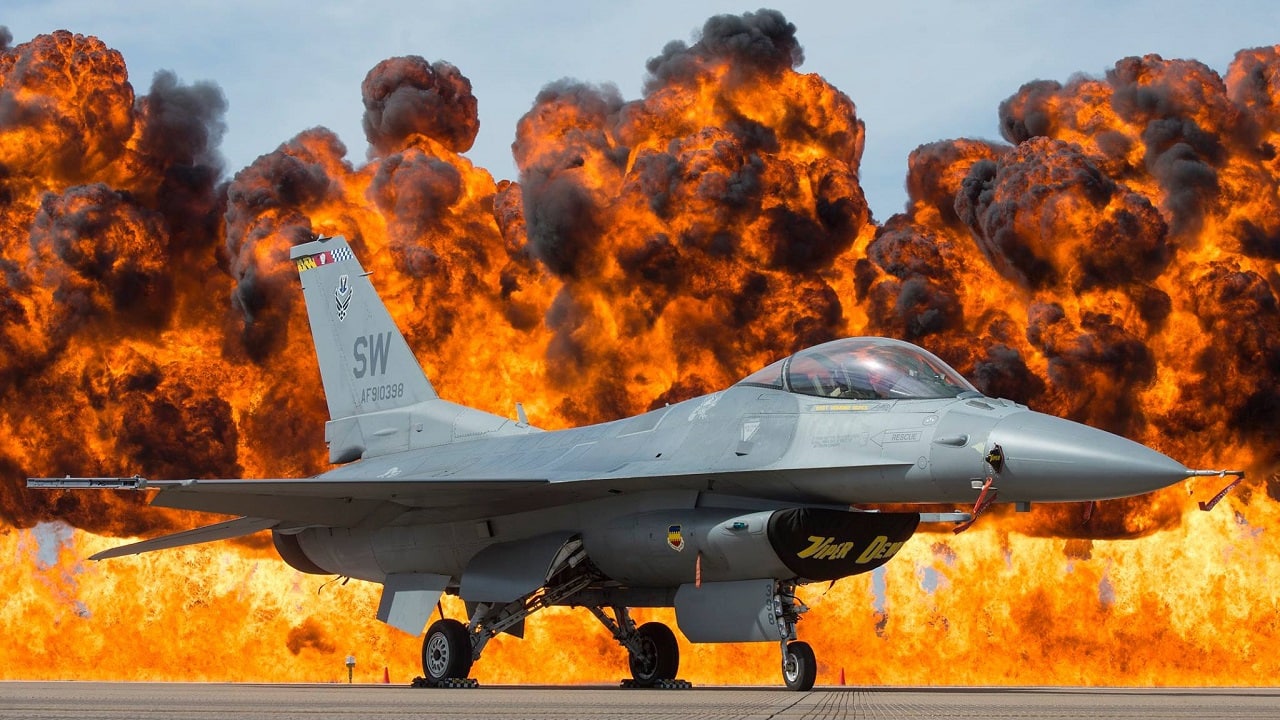Start Training Ukrainians on F-16s Now: As the first anniversary of Russia’s 2022 invasion of Ukraine nears, Ukraine continues to make progress on the battlefield. Absent Russian President Vladimir Putin’s ouster or death, however, Russia shows no willingness to concede defeat or evacuate all Ukrainian territory, including Crimea.
Putin believes time is on his side and that he can win a war of attrition, especially given the White House’s decision to limit Ukraine’s arsenal to weapons that cannot strike deep into Russia.
While President Joe Biden may believe this contains the war, in reality it prolongs it as it enables Russian factories to restock their arsenals or artillery, bombs, and drones.
(Subscribe to Our YouTube Channel Here. 19FortyFive publishes new videos every day.)
While, in the short-term, Ukraine needs tanks—U.S.-made M1 Abrams tanks and German Leopard-2 tanks—in the long-term, Ukraine also needs jet-fighters. While Ukrainians can operate Abrams and Leopards after only rump training, it cannot afford as many training short cuts with modern aircraft.
In July 2022, David Deptula, dean of the Mitchell Institute for Aerospace Studies who, during his Air Force career directed the Combined Air Operations Center at the beginning of the war in Afghanistan, argued in an essay that the United States should provide Ukraine with airpower. “Ukrainian pilots with ample fighter experience could quickly adapt to F-15s and F-16s if so enabled and would most likely wield a notable proficiency edge over their Russian opponents.”
Indeed, as he noted, the California Air National Guard has a three-decade relationship with Ukraine that has included an exchange relationship involving F-15s and F-16s. Nor are existing stockpiles the issue. The U.S. Air Force currently mothballs A-10 Warthog, F-15C/D and F-16C/D fighters, and RQ-4 Surveillance Drones.
While Biden has not approved dispatch of F-16s to Ukraine, prudence and experience suggests Washington should consider a decision to train Ukrainians on F-16s and a decision to provide Ukraine with F-16s to be mutually exclusive. At the beginning of the Kosovo conflict in 1999, President Bill Clinton assured both his Democratic base and Russia that U.S. ground forces would not enter Kosovo. As the situation changed, however, Clinton realized the mission required U.S. helicopters among other platforms, and some ground troops. The problem was he had not prepared any staging grounds nearer to Kosovo. When Clinton asked Secretary of Defense William Cohen to send Apache helicopter gunships from Germany to nearby Albania, the Pentagon informed the White House that it could take up to three months to get the necessary equipment in place. Had Clinton moved helicopters at the beginning of the conflict, he could then have had a range of options on the table whenever he made a decision.
At present, it takes approximately two years to move F-16 pilots from the simulator to mastery of the F-16s itself. If perfection need not be enemy of the good, then perhaps Ukrainians who begin training this month could be operating F-16s independently by summer 2024. A complete course of training would bring Ukrainian F-16 pilots into 2025. Such training would not force any decision, but it would keep all options on the table rather than force Ukraine and its allies to weather a two-year delay once Biden or a successor gives a green light.
It is likely that such a decision will come eventually. “Our political and military leadership has been stressing the importance of advance training of Ukrainian pilots for a long time,” Yuriy Sak, advisor to the Ukrainian defense ministry told me. “As was the case with other types of Western weapons systems, the political decision to provide Ukraine the fourth generation fighter jets will be made sooner or later. The earlier we start training our pilots, the sooner they will be ready to efficiently use the jets.”
Of course, Biden may never decide to provide F-16s. In such a situation, however, the United States would lose little. Ukrainian pilots would simply better understand the platform’s capabilities and mechanisms.
No harm, no foul.
Still, Biden should not deny any successor the right to make that decision, though. Greenlighting training now would have an important psychological effect. It would both be a shot of adrenalin into Ukrainian morale, and show both the Kremlin and ordinary Russians that Putin’s desire to wear down Ukraine and the West will never work. Rather, the longer Russia continues its assault, the worse the strategic situation will become for Russia and the more Russians will come home in body bags.
Biden says, “Diplomacy is back.” Allowing Ukrainians to train on F-16s now would be a win-win: It would add heft to that diplomacy today and could add capability to Ukraine’s military tomorrow.
MORE: Is Donald Trump a ‘Cognitive Mess’?
MORE: Should Joe Biden Really Run in 2024?
MORE: Ron DeSantis May Peak Too Early
Now a 19FortyFive Contributing Editor, Dr. Michael Rubin is a Senior Fellow at the American Enterprise Institute (AEI). Dr. Rubin is the author, coauthor, and coeditor of several books exploring diplomacy, Iranian history, Arab culture, Kurdish studies, and Shi’ite politics, including “Seven Pillars: What Really Causes Instability in the Middle East?” (AEI Press, 2019); “Kurdistan Rising” (AEI Press, 2016); “Dancing with the Devil: The Perils of Engaging Rogue Regimes” (Encounter Books, 2014); and “Eternal Iran: Continuity and Chaos” (Palgrave, 2005).

